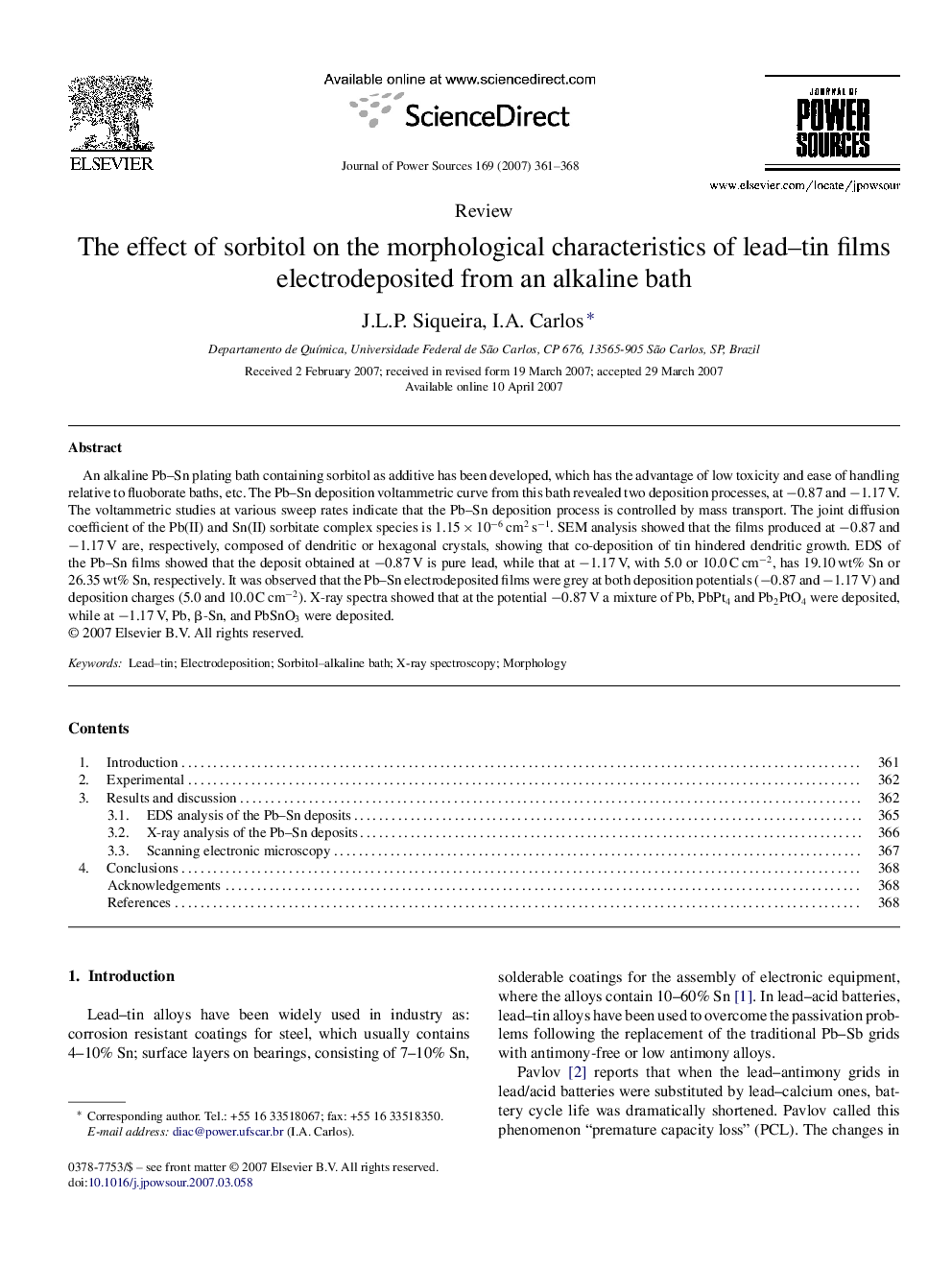| کد مقاله | کد نشریه | سال انتشار | مقاله انگلیسی | نسخه تمام متن |
|---|---|---|---|---|
| 1291480 | 973361 | 2007 | 8 صفحه PDF | دانلود رایگان |

An alkaline Pb–Sn plating bath containing sorbitol as additive has been developed, which has the advantage of low toxicity and ease of handling relative to fluoborate baths, etc. The Pb–Sn deposition voltammetric curve from this bath revealed two deposition processes, at −0.87 and −1.17 V. The voltammetric studies at various sweep rates indicate that the Pb–Sn deposition process is controlled by mass transport. The joint diffusion coefficient of the Pb(II) and Sn(II) sorbitate complex species is 1.15 × 10−6 cm2 s−1. SEM analysis showed that the films produced at −0.87 and −1.17 V are, respectively, composed of dendritic or hexagonal crystals, showing that co-deposition of tin hindered dendritic growth. EDS of the Pb–Sn films showed that the deposit obtained at −0.87 V is pure lead, while that at −1.17 V, with 5.0 or 10.0 C cm−2, has 19.10 wt% Sn or 26.35 wt% Sn, respectively. It was observed that the Pb–Sn electrodeposited films were grey at both deposition potentials (−0.87 and −1.17 V) and deposition charges (5.0 and 10.0 C cm−2). X-ray spectra showed that at the potential −0.87 V a mixture of Pb, PbPt4 and Pb2PtO4 were deposited, while at −1.17 V, Pb, β-Sn, and PbSnO3 were deposited.
Journal: Journal of Power Sources - Volume 169, Issue 2, 20 June 2007, Pages 361–368